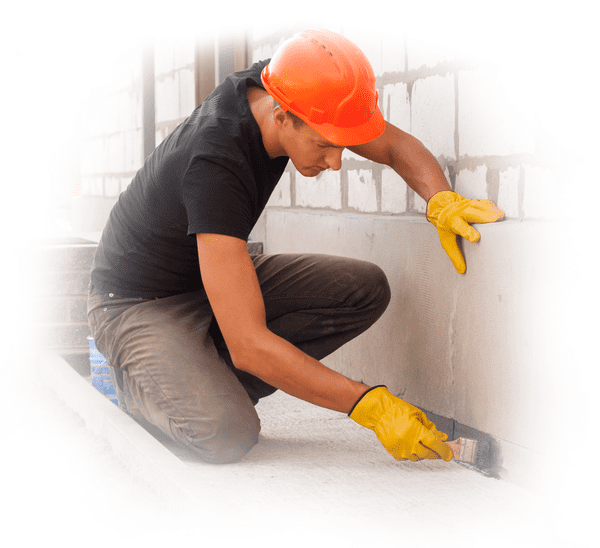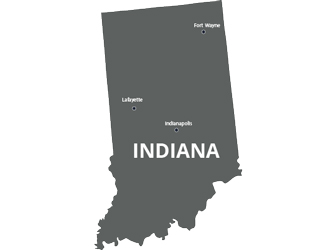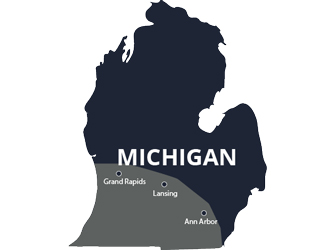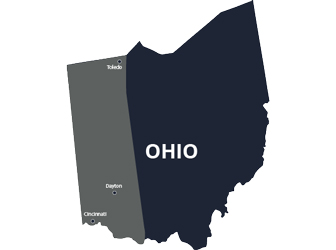Originally posted 9/28/18, updated 10/1/2021
No homeowner wants to see mold. It doesn’t matter if it’s on leftovers in your fridge or on the walls in your basement or crawl space. Mold is just not a welcome addition to anyone’s home.
October is National Healthy Lung Month and in the Midwest, October is also when temperatures cool down. As we start closing our windows and setting our thermostats to heat, it’s time to evaluate the quality of the air that you and your family are breathing. Did you know that the air your HVAC circulates throughout your home comes from your basement or crawl space?
Acculevel is an Indiana-based contractor that specializes in foundation repair and waterproofing. Since our start in 1996, we’ve helped more than 35,000 homeowners preserve and protect their greatest investment. As a family-owned and operated company, our first priority is the health and safety of our customers and their homes.
In this article, we’re going to explore the causes of mold, how to treat it, and how to prevent it from returning.
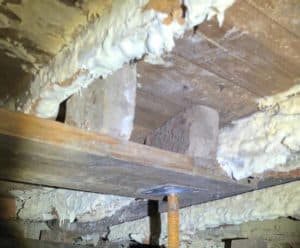
This photo was taken by an Acculevel project advisor during a routine home assessment. The floor joists and beams in this crawl space are damp, decaying, and covered in mold.
What Causes Mold to Grow in a Basement or Crawl Space?
Mold and related biological growth will thrive in a dark and damp space. If your basement or crawl space is moist, you may already have mold developing. Mold spores are everywhere in our environment, and spread easily. You can bring them in on your shoes or clothes, in the air when you open and close your front door, or they can find their own way in through a crack or gap in your foundation.
If you or someone in your family has allergies or lung sensitivity, they can develop a serious medical issue. Children (especially infants), the elderly, and people with lung diseases or compromised immune systems are at a higher risk for health complications.
How Do You Prevent Mold from Growing?
The best way to prevent mold is to keep your basement or crawl space dry. This is one of those tasks that’s easier to say than to do. Mold and similar biological organisms don’t need standing water to grow; just a bit of moisture is enough.
Waterproofing is a Must
You need to start by waterproofing your basement or crawl space. This is a management system that includes water drainage and a sump pump. Any water that intrudes into your space will be directed and drained in a timely fashion out of your home. In a crawl space, you will also need a good vapor barrier or encapsulation. This extra step prevents moisture from evaporating from the ground directly into your crawl space.

This photo was taken by an Acculevel crew member after waterproofing and encapsulating the basement. This home’s foundation is brick, which is a very porous material that allows for easy water intrusion.
Encapsulation is an Excellent Option
Encapsulation is not restricted to only crawl spaces, though. If you have a very damp basement, or if you are interested in finishing a portion of it, encapsulation is also the best option for your basement. Imagine how upsetting it would be, to install a gorgeous home theater room or bedroom suite in your basement- only to have to rip some of it out when it gets damp and moldy!
Encapsulation = installing a strong liner along the walls of a basement (walls & floor if it’s a crawl space). This liner prevents any moisture from getting into the space below your home and guiding it directly into the water drainage system.
You Need a Dehumidifier for Clean Air
You should also invest in a dehumidifier. As the name suggests, a whole-home dehumidifier is capable of restraining the humidity level of your entire home. Mold is not the only threat to your family that thrives in a moist environment. If you look at the chart below, you will see a list of threats to your health. None of us want these intruders in our air.
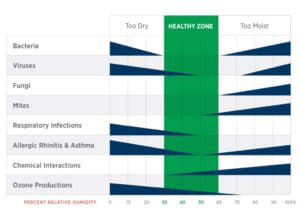
This chart is the result of a study done by ASHRAE (American Society of Heating, Refrigerating and Air-Conditioning Engineers). It shows that there are many harmful organisms that thrive in an environment with too much (or too little) humidity.
A whole-home dehumidifier can be set to maintain the ideal humidity level (50%). Unlike the room-size units you see in most home stores, a whole-home dehumidifier doesn’t need to be manually emptied. It includes a drainage line that can be routed directly to your sump pump.
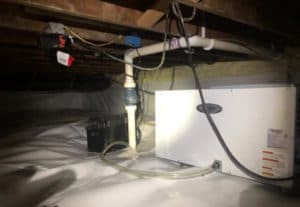
This photo was also taken by an Acculevel team member, after encapsulating a crawl space. The dehumidifier was installed next to the sump pump for ease of use.
How Do You Safely Remove Mold?
To begin with, you should not remove it. Unless you have the necessary experience, materials, and protective gear, it’s best to leave removal to the professionals. They will be able to safely assess the severity of the problem, determine the needed solution(s), and perform the work without putting you or your family at risk. You can learn more about Acculevel’s treatment methods for removing biological growth in another article.
Do You Need More Information about Waterproofing Your Home?
There’s overlap between water drainage for basements and crawl spaces, but there are some distinct differences. We’ve developed homeowner guides for both home types; choose the one that works best for you.
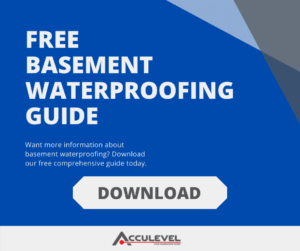 |  |
These are free, detailed, and comprehensive reviews of the subject: we cover installation types, methods, costs, and necessary repairs. These are meant to be long-term resources for homeowners; bookmark them, read the section(s) you need now, come back to them when you have new questions!
Are You Ready to Meet with an Acculevel Pro?
If you live in Indiana or within our service area, give us a call at 866-669-3349. Prefer electronic communication? Complete our online form and one of our friendly call center representatives will schedule an in-home meeting with an experienced project advisor in your area. They will discuss your concerns about your home, what you want updated or changed, and then assess your house for potential issues. Together, you’ll then develop a whole-home solution for resolving problems and protecting your home from future damages.














